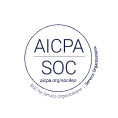
What's the cost of bad UX?

Ever clicked a button that didn't respond, searched for something that should be easy to find, or bailed on a checkout process because it asked for the same information three times?
Every click, scroll, and interaction has a cost, especially when it doesn't work as expected. Bad UX doesn't just annoy customers; it quietly drains revenue, increases support costs, and wastes development resources. Yet many organizations still treat user experience as a design concern rather than a business performance metric.
The result? Potentially, millions of dollars lost to problems that could have been prevented.
The Total Economic Impact™ Of UserTesting, a commissioned study by Forrester Consulting on behalf of UserTesting (August 2025), reveals how much organizations stand to gain or lose, based on how they approach user experience. The findings show that organizations investing in better usability and customer understanding see measurable business returns: a 415% ROI, $7.6 million in net present value over three years, and a payback period of less than six months.
"415% Return On Investment. $7.6 million Net Present Value. <6 months payback period."
The real costs of bad UX
Lost revenue from preventable abandonment. Confusing checkout flows, unclear onboarding processes, and navigation that doesn't match user expectations all drive abandonment and churn. One organization in the finance sector found that without timely UX research, they risked losing up to 50% of customers eligible for a new product offering. The financial impact of these UX mistakes compounds over time.
Higher support costs from poor design. Usability issues generate avoidable support tickets and call volume. The director of design operations at a software company described how usability issues can escalate quickly: "The customers are in their roles performing critical business responsibilities. If they're clicking on the wrong button, they think they can't perform a test. They log a bug. They start getting involved in support tickets."
Wasted development spend on wrong solutions. Teams often build or rebuild features that fail to meet user needs because they didn't test early enough. Common UX mistakes like unclear navigation, inconsistent interface patterns, or features that don't align with user workflows all require expensive post-launch fixes.
Reputation risk that erodes brand trust. Bad user experience erodes trust and brand loyalty faster than almost anything else. As one interviewee noted, even a single corrected product decision could recoup their annual investment in better UX research and testing.
The financial impact: what the numbers show
The composite organization in the study, representing six enterprises across software, finance, e-commerce, consumer packaged goods, and retail, achieved a 415% ROI and a payback period of less than six months, achieving $7.6 million in net present value over three years.
Optimized usability drove a 7.2% increase in conversion rates. By addressing usability issues early in the design process, they avoided the revenue loss that comes with bad UX. Over three years, profit from optimized usability was worth $2.1 million.
Product and service improvements increased customer retention by 10%. Organizations kept customers who might have left for competitors. Over three years, profit from increased customer satisfaction was worth $2.5 million.
Prelaunch validation reduced iteration cycles by 25%. Organizations caught UX mistakes before they reached production, saving millions in development costs. Over three years, avoided developer rework was worth $2.5 million.
Streamlined workflows saved researchers 50% of their time and designers 10%. Over three years, improved productivity was worth $2.4 million.
TEI study
The Total Economic Impact™ Of UserTesting
Why bad UX keeps happening
Data without context leaves questions unanswered. Analytics tools capture the sequence of user actions, but not the story behind them. This lack of context makes it nearly impossible to fix usability issues with confidence.
Slow research cycles can't keep pace with digital change. When it takes six weeks just to recruit participants, teams ship products with undetected usability issues that could have been caught and corrected before launch.
Siloed decision-making fragments the customer view. This siloed approach leads to disconnected experiences. The result is bad UX that stems from misalignment rather than malice.
Reactive fixes cost more than proactive validation. By the time teams react to bad user experience in production, they've already paid the price in lost revenue, damaged customer relationships, and wasted resources.
How organizations are preventing bad UX and turning costs into ROI
Human insight helps prevent usability issues before launch. One e-commerce company used this approach to finally prioritize product ratings and reviews. The UX researcher explained: "We were able to use UserTesting to help confirm everything we knew, and there's no question that this is something that was absolutely necessary even regardless of financial impact to the business."
Continuous testing enables faster, smarter decisions. One consumer packaged goods organization transitioned from conducting one or two tests per quarter to running multiple tests per week. This continuous feedback loop helps teams identify and correct bad user experience patterns quickly, before they scale across the entire product.
Empowered teams move from debate to evidence. The vice president of digital experience at a consumer packaged goods company noted that access to user data reduced subjective debates by 50%. Evidence-based decision-making helps teams avoid common UX mistakes that stem from assumptions rather than user research.
Cultural transformation makes prevention everyone's responsibility. As one interviewee put it: "With UserTesting, we have gone from fighting to make the case to gather customer insights to inform decisions to an understanding that this is part of our process; we want to put things in front of customers before we make a decision."
Lessons for leaders: moving beyond bad UX
Treat bad UX as a business risk, not just a design concern. When leadership views user experience through the lens of revenue, retention, and efficiency, investment decisions become clearer.
Invest in early-stage research to prevent usability issues. The cost of validating an idea before development is a fraction of the cost of building the wrong thing. One interviewee noted: "One corrected product decision alone could recoup our annual investment."
Use a combination of qualitative and quantitative insights to catch UX mistakes early. Analytics show you what happened. User feedback explains why. Together, they provide the complete picture you need to make confident decisions and avoid costly errors.
Promote a customer-centric culture by sharing usability findings across teams. One organization went from conducting no user research to scaling to 1,200 studies a year as the practice became embedded in their culture.
The ROI of preventing bad UX
Bad UX doesn't just cost customers. It costs companies. Millions of dollars flow out through lost revenue, wasted development cycles, and unnecessary support costs. These losses are predictable, measurable, and entirely preventable.
The good news? Preventing bad user experience is faster and more achievable than ever. Organizations that prioritize usability and human insight unlock measurable value across their business. All of this translated to a 415% ROI with a payback period of less than six months.
The organizations winning in today's digital economy aren't the ones with the biggest budgets or the most features. They're the ones that understand their customers deeply enough to build experiences that actually work, and avoid the costly trap of bad user experience.
Explore the commissioned Forrester Consulting study, The Total Economic Impact™ Of UserTesting, to see how leading organizations are quantifying the value of great experiences and preventing bad UX at scale.
Disclaimer: The Total Economic Impact™ Of UserTesting study is commissioned by UserTesting and delivered by Forrester Consulting. It is not meant to be used as a competitive analysis. Forrester does not endorse UserTesting or its offerings. The results are based on interviews with UserTesting customers and are representative of their experiences. Actual results may vary.





